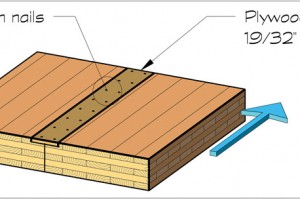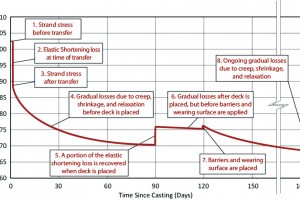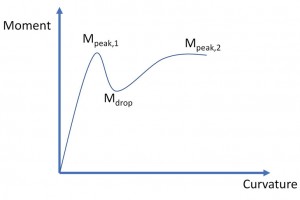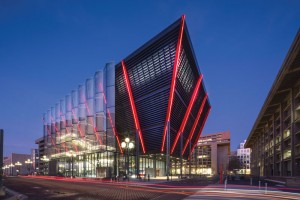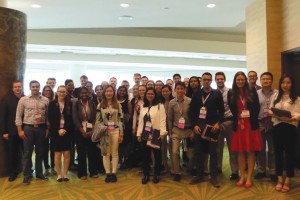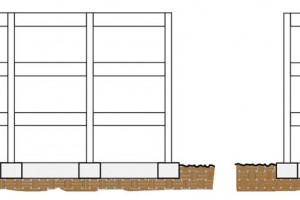Cross-Laminated Timber (CLT) panels are becoming increasingly common as a roof or floor deck system in mass timber buildings. The roof and floor deck systems need to be carefully engineered and detailed to serve as diaphragms resisting wind and seismic loads. The diaphragm transmits lateral loads to the vertical lateral load resisting elements – usually shear walls or braced frames. …
Review Category : Articles
Part 1
The ability to premanufacture elements helped to proliferate concrete as an essential building material. Rectangular blocks, for example, could be manufactured rapidly and easily transported to make many types of structures, from steps, sheds, and buildings to intricate tunnels, aqueduct systems, and bridges. These emerging technologies and the infrastructure they enabled have continually reshaped the way communities are organized through more efficient transportation of people and goods. The next step in the evolution of precasting concrete is prestressed concrete. This article discusses some of the technologies and materials that make modern prestressing techniques achievable. …
Reconciling the 2018 IBC, ACI 318-19, and PCI’s 2019 Report
This is a follow-up to a previous STRUCTURE magazine article titled Rethinking Seismic Ductility (March, 2016). The previous article presented possible shortcomings associated with the International Building Code (IBC) prescriptive seismic design philosophy used for both auger cast piles and prestressed piles to contrast foundation ductility design with that used for other structural elements. It also provided a side-by-side comparison of design and performance issues associated with auger cast piles and prestressed piles. …
There are many Lessons not Learned in spite of experience. Thankfully there are also examples of Lessons Learned through experience that have contributed to meeting technical and ethical responsibilities. As engineers, we should pursue the latter. The most tragic and devastating LESSON NOT LEARNED in our lifetime is the undoing of all of the bitter lessons learned through experience in battling pandemics. Today’s coronavirus pandemic has wreaked havoc, bringing death, economic depression, widespread disease, unemployment, education disruption, and more. …
The article represents a collaborative effort by members of the STRUCTURE magazine Editorial Board. Text enclosed in quotes denotes personal experiences during the COVID-19 pandemic.
Working at home provides unique flexibility that you do not have at an office. “It allows you to enjoy the sights and sounds of nature, be it the birds at the feeder hung on the patio or the flowers in the backyard. You can eat lunch with your family, spend time with a pet, defrost something for dinner ahead of time, or throw in a load of laundry rather than do it on the weekend.” …
Designed by renowned architects Rogers Stirk Harbour + Partners, and local architects Hickok Cole, the International Spy Museum at L’Enfant Plaza in Washington, DC, is a 130,000-square-foot, distinctively designed steel building with museum exhibition, office, retail, classroom, and event spaces. The project site at L’Enfant Plaza was chosen in part to create a pedestrian connection between the National Mall and the newly developed Southwest Waterfront in downtown Washington, DC. …
It was a beautiful day in Seattle, with the bluest skies you have ever seen. On that day, I was at my construction site, waiting to pour the first building foundation. I retired in 2013 and converted my assets into constructing seven rental units. After 40 years of practicing structural engineering, I was confident that I could be my own general contractor. It should be easy on a small project. …
Soil-structure interaction (SSI) can make a substantial difference in how buildings behave during earthquake shaking and how they should be designed. Yet, there is relatively little implementation of SSI effects by practicing structural engineers. Provisions are available in ASCE/SEI 7-16, Minimum Design Loads and Other Criteria for Buildings and Other Structures, and in ASCE/SEI 41-17, Seismic Evaluation and Retrofit of Existing Buildings, that can be used to address SSI. However, they can be hard to follow, and limited guidance is available. To help engineers, FEMA has funded a project managed by the Applied Technology Council (ATC) and identified as ATC-144, which is nearing completion. The output from this effort includes the development of a design guide of examples, entitled FEMA P-2091, A Practical Guide to Soil-Structure Interaction. …
Unexpected and Unfortunate Events Leading to Structural Failures
The role of structural design professionals is often complex, starting early in the conceptual phase and continuing until after project completion. From the onset, they knead architects’ visions for space and form into a stable reality. Throughout, they are navigating imperfect sites they did not select, maintaining restrictive budgets they did not create, and meeting aggressive schedules they did not approve. Nevertheless, structural professionals press forward to deliver successful structures meeting the owner’s needs and architect’s dreams. To consistently deliver reliable solutions, despite challenging circumstances, structural professionals rely on proven design processes to tactfully advance from concept to construction. Though no universally applicable workflow exists to capture the nuances of every design procedure perfectly, specific steps generally describe the typical process (Table). …
I am a structural engineer and quite happy with who I am. Call me a simple guy. I grew up in a small town, and I was happy. I went to public schools, played little league baseball, and learned the value of hard work from a dad with a solid work ethic. It was not until much later in life that I learned my family lived well below the government’s established “poverty line.” Nobody told me, so I did not know we were poor. I did not know I was supposed to be miserable. …

